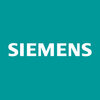Validation Engineer
50+ Validation Engineer Interview Questions and Answers

Asked in Cognizant

Q. What is the CSV? What is automation testing?
CSV stands for Computer System Validation. Automation testing is the use of software to execute tests.
CSV is a process of ensuring that a computer-based system meets its intended requirements and is compliant with regulatory standards.
Automation testing involves using software tools to run tests automatically, reducing the need for manual testing.
CSV and automation testing are often used together to ensure that computer systems are validated and tested thoroughly.
Examples of ...read more

Asked in UST

Q. What is the difference between firmware and a device driver?
Firmware is low-level software for hardware control, while device drivers enable communication between OS and hardware devices.
Firmware is embedded software that controls hardware functions, e.g., BIOS in a computer.
Device drivers are software that allow the operating system to communicate with hardware, e.g., printer drivers.
Firmware is often specific to a device and is not user-modifiable, while device drivers can be updated by users.
Firmware operates at a lower level than ...read more
Validation Engineer Interview Questions and Answers for Freshers

Asked in Cognizant

Q. What is 21 CFR Part 11?
21 CFR part 11 is a regulation by the FDA that defines the criteria for electronic records and electronic signatures in the pharmaceutical industry.
21 CFR part 11 is a regulation under the Code of Federal Regulations (CFR) Title 21, which is enforced by the U.S. Food and Drug Administration (FDA).
It sets the standards for electronic records and electronic signatures used in the pharmaceutical industry.
The regulation ensures the authenticity, integrity, and reliability of elec...read more

Asked in Cognizant

Q. Describe the GAMP guidelines, explain Gxp Project related bugs?
GAMP guidelines are a set of principles for validation of computerized systems in pharmaceutical and biotech industries.
GAMP stands for Good Automated Manufacturing Practice
It provides a framework for validation of computerized systems in regulated industries
GAMP guidelines are divided into five categories: Category 1-5
Category 1 is for infrastructure and Category 5 is for software applications
Gxp Project related bugs are those that affect the compliance of the system with GA...read more

Asked in Cognizant

Q. How many categories of software are there?
There are several categories of software, including system software, application software, programming software, and malware.
System software
Application software
Programming software
Malware

Asked in Cognizant

Q. SDLC ? How many types of hardware?
SDLC refers to the software development life cycle. There are various types of hardware such as input, output, storage, and processing devices.
SDLC is a process followed by software development teams to design, develop, and test software.
Hardware can be classified into four types: input devices (e.g. keyboard, mouse), output devices (e.g. monitor, printer), storage devices (e.g. hard disk, USB drive), and processing devices (e.g. CPU, GPU).
Validation engineers ensure that the...read more
Validation Engineer Jobs

Asked in Cognizant

Q. How do you convince your customer about the validation required for software purchased from a third party that is already validated?
Convincing customers on the necessity of validating third-party software involves addressing compliance, risk management, and quality assurance.
Explain regulatory requirements: Many industries, especially healthcare, require validation to ensure compliance with standards like FDA or ISO.
Highlight risk management: Emphasize that validation helps identify potential risks associated with using third-party software, ensuring patient safety.
Discuss integration issues: Point out th...read more

Asked in UST

Q. What is Bug, error, black box testing?
Bug is a defect in software, error is a mistake made by a programmer, black box testing is testing without knowledge of internal code.
Bug: a flaw in software that causes it to behave unexpectedly or incorrectly
Error: a mistake made by a programmer that results in incorrect code
Black box testing: testing without knowledge of the internal code, focusing on inputs and outputs
Example: entering invalid data into a form and receiving an error message
Example: a button on a website n...read more
Share interview questions and help millions of jobseekers 🌟


Asked in Cognizant

Q. What are the testing tools?
Testing tools are software applications used to automate and manage the testing process.
Automated testing tools like Selenium, Appium, and TestComplete
Performance testing tools like JMeter and LoadRunner
Bug tracking tools like JIRA and Bugzilla
Code coverage tools like JaCoCo and Cobertura
Continuous integration tools like Jenkins and Travis CI

Asked in Capgemini

Q. what is can and how does the protocol work?
CAN is a protocol used for communication between electronic devices in vehicles.
CAN stands for Controller Area Network.
It is a serial communication protocol that allows multiple electronic control units (ECUs) to communicate with each other.
CAN uses a two-wire bus system, consisting of a CAN High (CANH) and a CAN Low (CANL) wire.
It employs a message-based communication scheme, where each message is identified by a unique identifier (ID).
CAN supports both standard and extended...read more

Asked in Infosys

Q. Which programming languages are you familiar with?
You must know programming languages like Python, Java, C++, and SQL.
Python is commonly used for automation and data analysis
Java is used for developing enterprise-level applications
C++ is used for developing system software and games
SQL is used for managing and querying databases

Asked in Siemens

Q. What are the validation processes in Railway Industries?
Validation processes in Railway Industries ensure that systems and components meet safety and performance standards.
Validation involves testing and verifying systems, components, and processes to ensure they meet regulatory requirements.
Validation may include functional testing, performance testing, and safety testing.
Examples of validation processes in Railway Industries include testing signaling systems, brakes, and communication systems.
Validation also involves documentati...read more

Asked in Alstom Transportation

Q. What is the difference between validation and verification, and how do you justify it?
Validation is the process of evaluating a system or component during or at the end of the development process, while verification is the process of evaluating a system or component to determine whether it satisfies the specified requirements.
Validation ensures that the system meets the user's needs and intended use, while verification ensures that the system meets the specified requirements.
Validation is subjective and focuses on the final product, while verification is objec...read more
Asked in WAYS Automation

Q. What is the difference between cold loop checking and hot loop checking?
Cold loop checking is done with the system off, while hot loop checking is done with the system on.
Cold loop checking is performed when the system is not operational, to verify the wiring and connections.
Hot loop checking is done when the system is running, to test the functionality of the loops and components.
Cold loop checking is safer as there is no risk of equipment damage, while hot loop checking carries the risk of damaging components if not done carefully.

Asked in Xybion Corporation

Q. What are categories of software’s explain risk assessment for categories 3and 4
Categories 3 and 4 software are critical and pose high risk. Risk assessment involves identifying potential hazards and evaluating their impact.
Category 3 software includes software that directly controls a medical device, such as infusion pumps or pacemakers.
Category 4 software includes software that is used for critical healthcare decision-making, such as diagnostic software.
Risk assessment for these categories involves identifying potential hazards, assessing the likelihoo...read more

Asked in Intel

Q. What kind of memory do L2 and L3 caches have?
L2 and L3 cache are both types of memory that are used to improve CPU performance.
L2 cache is typically located on the CPU and is faster than L3 cache.
L3 cache is larger than L2 cache and is usually shared among multiple CPU cores.
Both L2 and L3 cache are used to store frequently accessed data to reduce the time it takes for the CPU to access that data.
Examples of processors with L2 and L3 cache include Intel Core i7 and AMD Ryzen processors.

Asked in NEC

Q. Creations of different RAID Levels and Running IO's
RAID levels are created to improve data redundancy and performance. IO's are run to test the performance of the RAID levels.
RAID 0 - Striping, no redundancy
RAID 1 - Mirroring, full redundancy
RAID 5 - Striping with parity, good balance of performance and redundancy
RAID 6 - Striping with double parity, better redundancy than RAID 5
RAID 10 - Combination of RAID 0 and RAID 1, high performance and redundancy
IO's are run to test the read and write performance of the RAID levels
Diff...read more

Asked in Ola Electric Mobility

Q. How well do you know the Linux operating system?
Yes, I have a good understanding of Linux operating system.
Familiar with Linux command line interface
Experience in installing and configuring Linux servers
Knowledge of Linux file system and permissions
Experience in shell scripting
Familiarity with Linux networking and security
Examples: Ubuntu, CentOS, Red Hat

Asked in Dura Automotive

Q. What are the services of UDS?
UDS (Unified Diagnostic Services) provides various services for communication between a diagnostic tester and an electronic control unit (ECU) in a vehicle.
Diagnostic Session Control
ECU Reset
Read/Write Data By Identifier
Security Access
Tester Present
Routine Control
Request Download
Request Upload
Transfer Data
Request Transfer Exit
Control DTC Setting
Response On Event
Link Control

Asked in TCS

Q. What is the Software Development Life Cycle (SDLC),
SDLC is a process used by software development teams to design, develop, test, and deploy high-quality software.
SDLC consists of several phases including planning, analysis, design, implementation, testing, and maintenance.
Each phase has specific goals and deliverables that must be completed before moving on to the next phase.
Examples of SDLC models include Waterfall, Agile, and DevOps.
SDLC helps ensure that software projects are completed on time, within budget, and meet cus...read more
Asked in Anthem GxP Solutions

Q. Are you familiar with pharmaceutical companies in India?
Yes, there are several well-known Pharma companies in India.
India is one of the largest producers of generic drugs in the world.
Some of the top Pharma companies in India include Sun Pharma, Dr. Reddy's Laboratories, Cipla, and Lupin.
India's Pharma industry is expected to grow to $100 billion by 2025.
The Indian government has implemented various initiatives to promote the growth of the Pharma industry, such as the 'Pharma Vision 2020' plan.
India is also a major exporter of pha...read more

Asked in Dura Automotive

Q. What are the functionalities of an ECU?
ECU is responsible for controlling various functions of a vehicle, including engine management, transmission, and emissions.
ECU stands for Engine Control Unit
It controls the fuel injection, ignition timing, and other engine functions
It also manages the transmission and emissions systems
ECUs can vary depending on the make and model of the vehicle
Examples of ECUs include the Powertrain Control Module (PCM) and Transmission Control Module (TCM)

Asked in NEC

Q. Validation of NVMe RAID/HBA Controller card
Validation of NVMe RAID/HBA Controller card
Perform functional testing to ensure the card meets the required specifications
Conduct stress testing to evaluate the card's performance under heavy workloads
Verify compatibility with different operating systems and hardware configurations
Document all test results and provide a validation report

Asked in Capgemini

Q. what is can v and what is can p?
CAN V and CAN P are two types of messages used in Controller Area Network (CAN) communication protocol.
CAN V stands for CAN Voltage and is used for transmitting data at a higher voltage level.
CAN P stands for CAN Protocol and is used for transmitting data at a lower voltage level.
CAN V is used for high-speed communication, while CAN P is used for low-speed communication.
CAN V is used for critical data transmission, while CAN P is used for non-critical data transmission.
Exampl...read more

Asked in Flex

Q. What is your experience in Unscripted testing?
I have extensive experience in unscripted testing, including exploratory testing and ad-hoc testing.
Performed exploratory testing to uncover defects that may not be found through scripted testing
Conducted ad-hoc testing to simulate real-world usage scenarios
Utilized risk-based testing to prioritize testing efforts based on potential impact
Asked in Anthem GxP Solutions

Q. Are you familiar with PLC and SCADA?
Yes, I am familiar with PLC (Programmable Logic Controllers) and SCADA (Supervisory Control and Data Acquisition) systems.
PLC is used for automation of industrial processes, such as controlling machinery on factory assembly lines.
SCADA systems monitor and control infrastructure and facility-based processes, such as water treatment and power generation.
An example of PLC use is in automotive manufacturing, where it controls robotic arms for assembly.
SCADA can be used in oil and...read more

Asked in Ciena

Q. Please describe your hardware knowledge.
I have extensive knowledge of hardware components, interfaces, protocols, and testing methodologies.
Familiar with various hardware components such as CPUs, GPUs, RAM, storage devices, and motherboards
Understanding of hardware interfaces like USB, HDMI, Ethernet, and PCIe
Knowledge of hardware protocols such as TCP/IP, SPI, I2C, and UART
Experience in testing hardware functionality, performance, and compatibility
Proficient in using tools like oscilloscopes, multimeters, logic an...read more

Asked in Capgemini

Q. What do you know about UDS?
UDS stands for Unified Diagnostic Services, a protocol used in automotive electronics for communication between ECUs.
UDS is used for diagnostic communication between ECUs in vehicles
It is based on the ISO 14229 standard
UDS allows for diagnostic services such as reading and clearing fault codes, accessing sensor data, and performing tests
It uses a request-response mechanism, with the diagnostic tool sending a request and the ECU responding with a response message
UDS is commonl...read more

Asked in NEC

Q. Validation of SAS RAID/HBA Controller card
Validation of SAS RAID/HBA Controller card involves testing its functionality and performance.
Verify compatibility with the system and operating system
Test data transfer rates and throughput
Ensure proper RAID configuration and redundancy
Perform stress testing to ensure stability and reliability
Document test results and provide validation report

Asked in Lupin

Q. What is validation & gamp category 5
Validation is the process of ensuring that a system or process meets predetermined requirements. GAMP Category 5 refers to software applications that are configurable and require minimal customization.
Validation is the process of confirming that a system or process meets predefined specifications and quality standards.
GAMP (Good Automated Manufacturing Practice) is a set of guidelines for the validation of automated systems in the pharmaceutical and healthcare industries.
GAMP...read more
Interview Questions of Similar Designations
Interview Experiences of Popular Companies
Calculate your in-hand salary
Confused about how your in-hand salary is calculated? Enter your annual salary (CTC) and get your in-hand salary

Reviews
Interviews
Salaries
Users